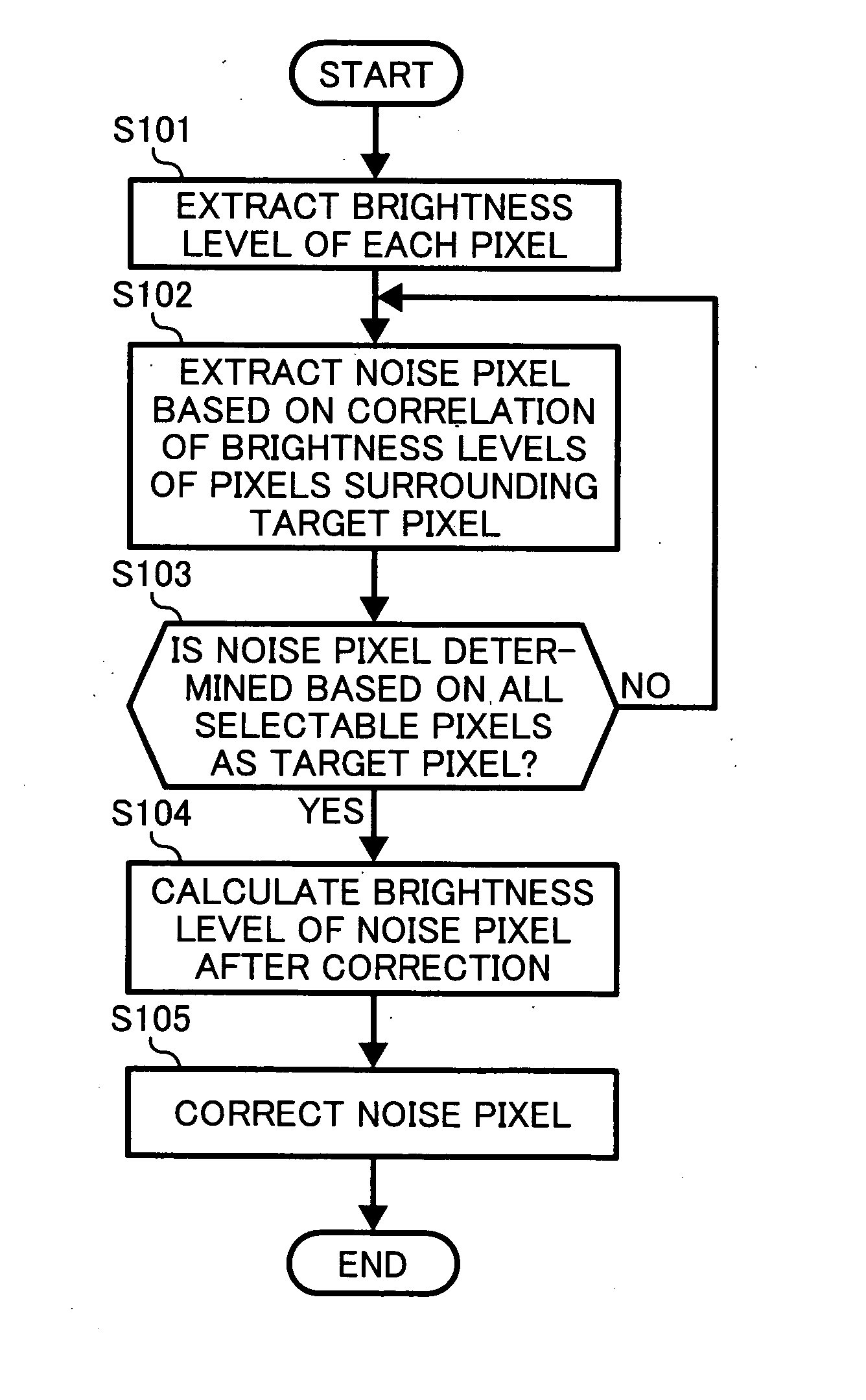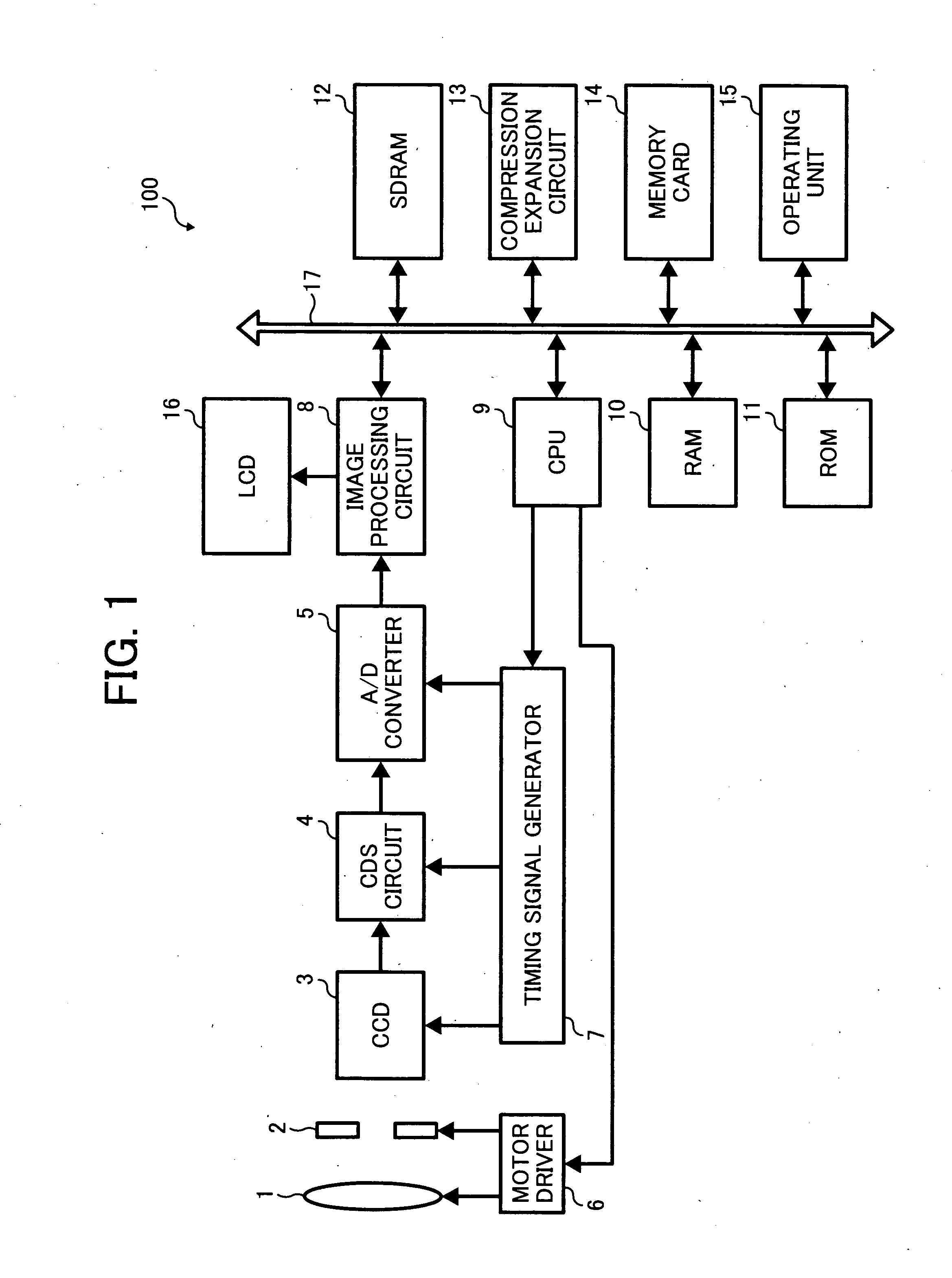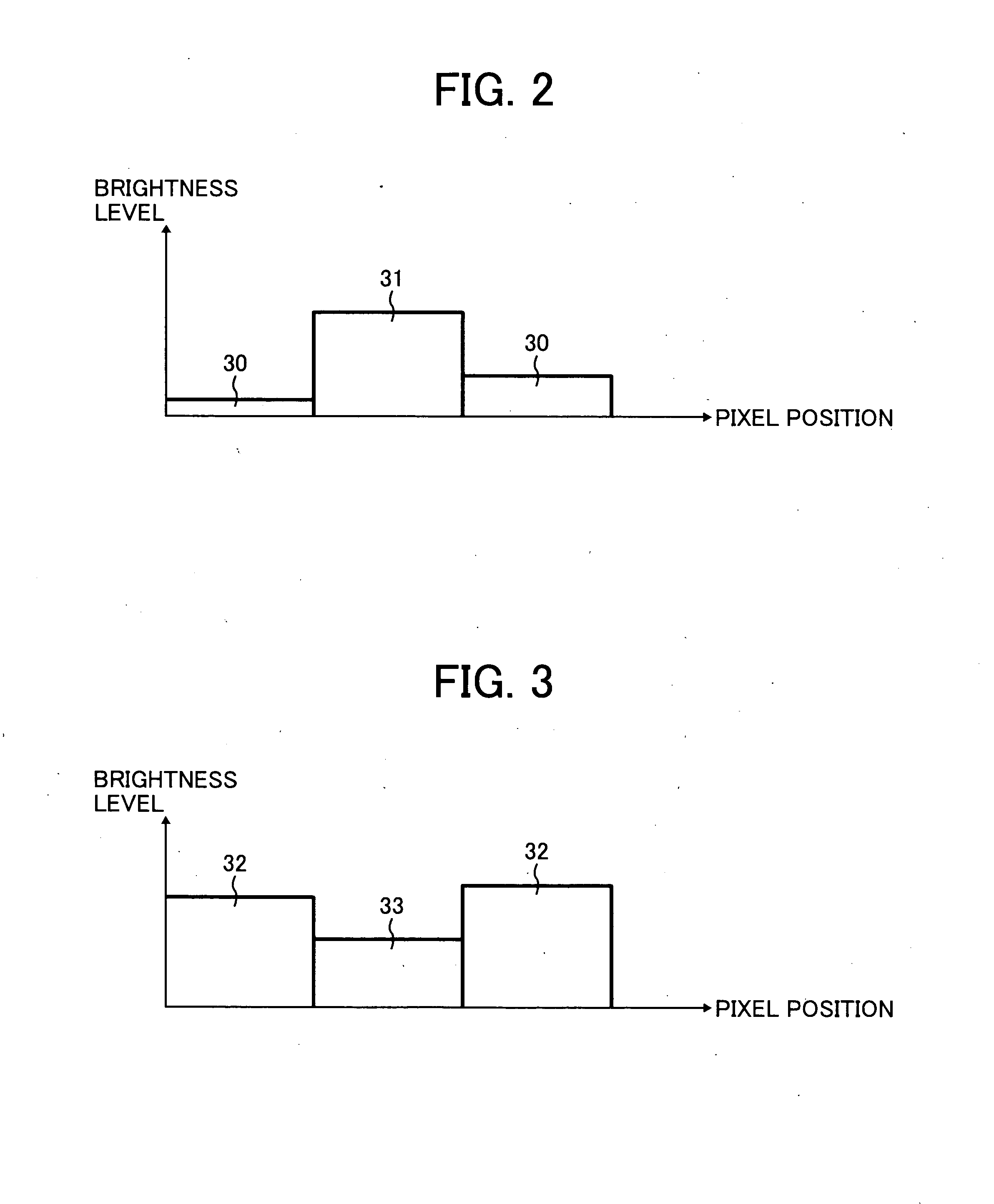Method and apparatus for image processing capable of effectively reducing an image noise
a technology of image noise and image processing, applied in the field of image noise reduction methods and programs, can solve the problems of easy generation, noise elimination methods with downsides, black spots in saturated pixels, etc., and achieve the effect of effective reduction of image nois
- Summary
- Abstract
- Description
- Claims
- Application Information
AI Technical Summary
Benefits of technology
Problems solved by technology
Method used
Image
Examples
first embodiment
[0057] In the first embodiment, merely the level of the brightness level is noted as a level of a pixel. However, the present invention may be applicable for other values of the pixel. The same may be said of a later described second and third exemplary embodiment of the present invention.
[0058] In a second exemplary embodiment of the present invention, the configuration may be the same as that of the first exemplary embodiment. However, a noise pixel detection method may be different.
[0059] In the first exemplary embodiment, as shown in FIG. 2 and FIG. 3, the search field is four neighboring pixels or eight neighboring pixels from the target pixel O. However, the noise generated in the image may vary depending on shooting conditions such as the temperature, a (exposure) time, shooting modes, and so forth at the time when the image is taken. In the second exemplary embodiment, the noise pixel may be detected by expanding the search field according to the shooting conditions at the ...
second embodiment
[0069] In the third exemplary embodiment, similarly to the second embodiment, the noise pixel detecting method may vary depending on the shooting conditions. However, in the third exemplary embodiment, the number of target pixels may be variable depending on the shooting conditions, whereas the search field may be variable depending on the shooting conditions in the second exemplary embodiment.
[0070] Generally, in a case where the exposure time is short or the temperature is low, most noise pixels may be isolated. On the other hand, it is known from the empirical rule that when the exposure time is long, the temperature rises, and the number of isolated noise pixels (hereinafter referred to as consecutive isolated noise) formed of a group of a plurality of pixels increases. Consequently, considering such a case, a plurality of pixels may simultaneously be selected as the target pixel depending on the shooting conditions.
[0071] First, a noise pixel is detected from an image to be pr...
PUM
 Login to View More
Login to View More Abstract
Description
Claims
Application Information
 Login to View More
Login to View More - R&D
- Intellectual Property
- Life Sciences
- Materials
- Tech Scout
- Unparalleled Data Quality
- Higher Quality Content
- 60% Fewer Hallucinations
Browse by: Latest US Patents, China's latest patents, Technical Efficacy Thesaurus, Application Domain, Technology Topic, Popular Technical Reports.
© 2025 PatSnap. All rights reserved.Legal|Privacy policy|Modern Slavery Act Transparency Statement|Sitemap|About US| Contact US: help@patsnap.com



